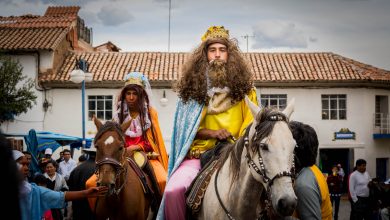Protecting Cusco’s Giant White Corn Seeds

A Peruvian artist once told me that the salty and sweet combination of choclo y queso holds as much culture heritage in Peru as margerita pizza does in Italy. It’s a classic Peruvian snack that’s extremely satisfying due to the crunch of the giant dried corn kernels and fresh salty cheese sold in wheels in Cusco’s markets. The combination has a simple and comforting effect, signature of most Peruvian dishes. Cusqueños take pride in their cuisine and the land from where it comes. Cusco’s Giant White Corn is no exception.

The giant, white corn is a heirloom seed that is indigenous and unique to the Sacred Valley. Generally grown in Colca and Urubamba, it has evolved to become the largest corn kernel in the world. The unique climate of the Sacred Valley with its freezing nights and sunny days serves not only as rich growing ground, but an ideal place for the 45-day drying process. Grown commercially and on small farms, the corn is made into the traditional fermented drink chica, served with ceviche or choclo y queso, and shipped internationally.
Regional flooding in 2010 drew attention to the fact that this heirloom seed is endangered due to the changing climate. Increased humidity and higher temperatures have impacted crops. Recent commercial developments have also drastically changed the land, market, and lifestyle of current farmers.
That’s why local community leader Arcadio from Maska, Pisac started building a seed bank for Cusco’s Giant White Corn and other indigenous seeds groups from the region. A environmentalist and indigenous rights activist, Arcadio’s ecocenter Kausay Punku in Maska serves as a learning center for those interested in learning about local, indigenous plants. While currently focused on education models for seed heritage and preservation, his long terms plan is to expand his project in order to house the largest heirloom seed bank.

Protecting Cusco’s Giant White Corn seeds and Sacred Valley soil from modern agricultural practices like pesticides, genetic modification, and foreign crops confronts much of the current urban development taking place across the Sacred Valley. For Arcadio and others concerned about seed diversification and the ancient relationship between crops and land it’s a crucial moment to respect and cultivate heirloom seeds and traditional farming practices.

For more information:




